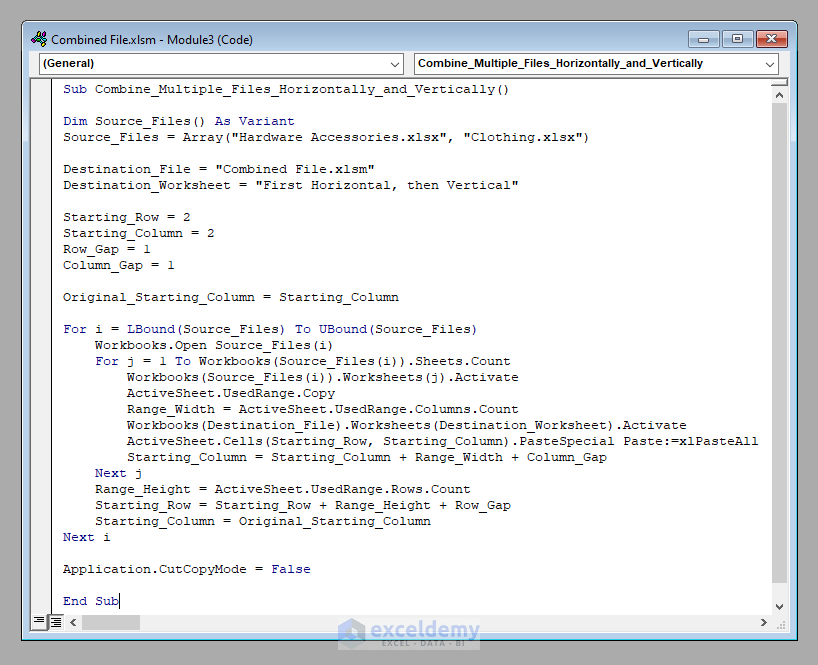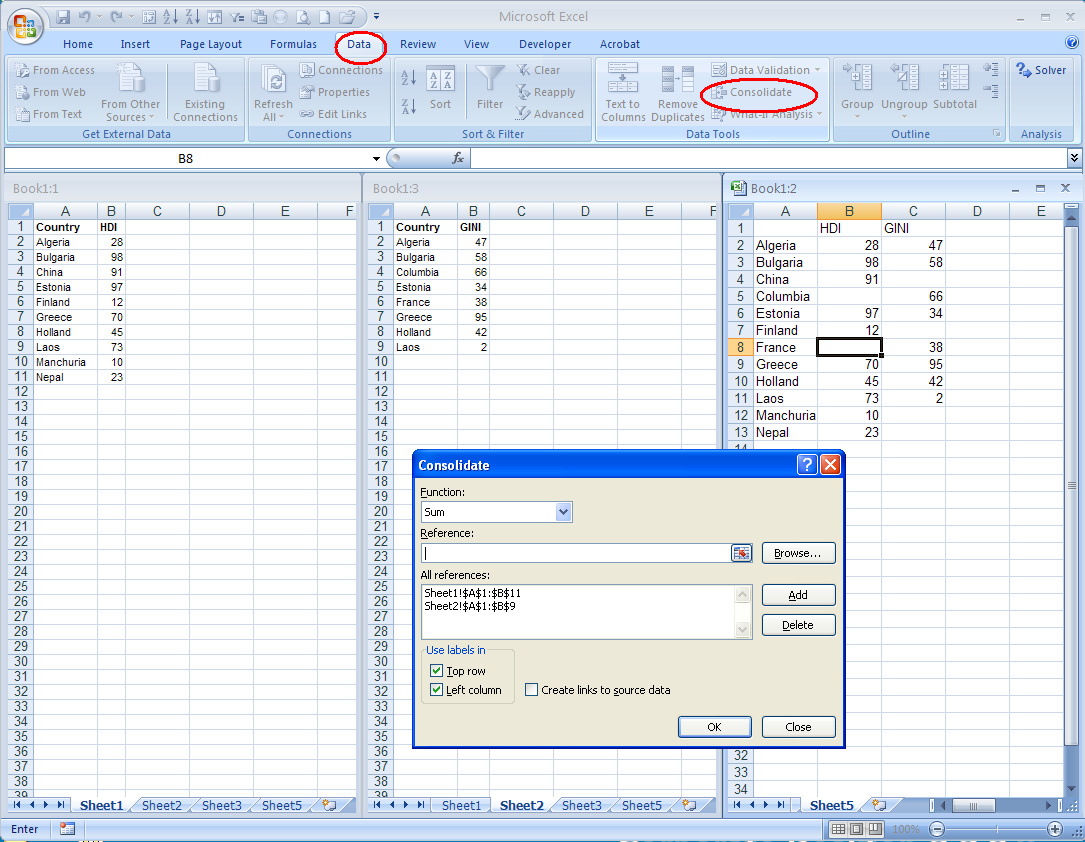5 Easy Ways to Merge Excel Sheets into One

Merging multiple Excel sheets into one can significantly streamline your data management and analysis tasks. Whether you're compiling financial reports, aggregating customer information, or just trying to organize your spreadsheet data, knowing how to efficiently merge Excel sheets is key. Here are five straightforward methods to achieve this, ensuring you can work more efficiently with your data.
Method 1: Manual Copy and Paste


The simplest way to merge Excel sheets is by manually copying and pasting data from one sheet to another. This method is best for:
- Small datasets
- When you need full control over the merging process
Here’s how to do it:
- Open the Excel workbook containing the sheets you want to merge.
- Select the data from the source sheet you want to merge.
- Press Ctrl + C or right-click and choose Copy.
- Navigate to the destination sheet and click where you want to paste the data.
- Press Ctrl + V or right-click and select Paste.
💡 Note: Be cautious with this method as it might not automatically handle formatting or hidden rows/columns.
Method 2: Using Excel’s Consolidate Feature


The Consolidate feature in Excel is useful when you need to merge data based on specific functions like sum or average:
- It’s ideal for summarizing data from multiple sheets.
- Can aggregate data without duplicating entries.
Follow these steps:
- Open the workbook and select a new sheet for the consolidated data.
- Go to the Data tab, then choose Consolidate.
- Under Function, select how you want to combine the data (e.g., Sum).
- Add each range from your source sheets by clicking Add in the Reference section.
- Check Top row or Left column if your data has headers.
- Click OK to consolidate.
🔍 Note: Ensure the source sheets have consistent structures to avoid errors in consolidation.
Method 3: Power Query for Data Import and Merge


Power Query, an advanced data transformation tool, can merge Excel sheets with greater flexibility:
- Allows for data transformation before merging.
- Can handle multiple files or sheets in different workbooks.
Here's how to use it:
- Open the workbook and go to the Data tab.
- Click Get Data > From File > From Excel Workbook.
- Select the workbook containing your sheets, then click Import.
- In the Power Query Editor, choose the sheets you want to merge by clicking Append Queries.
- Decide whether you want to Append or Merge the data, then click OK.
- Adjust the data if needed, then close and load the result back into Excel.
⚙️ Note: Power Query can learn from your transformations, making future merges quicker.
Method 4: VLOOKUP to Combine Data


VLOOKUP can help you bring data together from different sheets based on a common key:
- Useful when you have a master sheet and need to pull information from others.
The process involves:
- Ensure a common identifier exists in both sheets for lookup.
- In your destination sheet, enter the VLOOKUP formula:
- For example, if your common identifier is in column A, the formula might be:
=VLOOKUP(A2, Sheet2!A:D, 2, FALSE)
=VLOOKUP(lookup_value, sheet_range, column_index_num, [range_lookup])
🔍 Note: VLOOKUP can be slow and less efficient with large datasets.
Method 5: Using Excel VBA to Merge Sheets


VBA scripting offers automation for merging Excel sheets, which is particularly useful for:
- Regular data consolidation tasks.
- Handling large datasets with specific rules for merging.
Here’s a simple VBA script to get you started:
Sub MergeSheets()
Dim ws As Worksheet
Dim lastRow As Long
Dim destinationSheet As Worksheet
Set destinationSheet = ThisWorkbook.Sheets("Sheet1") ' Change to your sheet name
For Each ws In ThisWorkbook.Worksheets
If ws.Name <> destinationSheet.Name Then
lastRow = destinationSheet.Cells(destinationSheet.Rows.Count, "A").End(xlUp).Row
ws.Rows("2:" & ws.Rows.Count).Copy Destination:=destinationSheet.Cells(lastRow + 1, "A")
End If
Next ws
End Sub
This script copies all data from rows 2 onwards of each sheet to the bottom of the destination sheet:
📝 Note: VBA scripts require some learning, but they offer extensive control over Excel operations.
Merging Excel sheets into one can simplify your work, whether for analysis or reporting. By choosing the right method from manual copy-paste to automation through VBA, you can tailor your approach to suit the data’s size and structure, saving you time and potentially increasing accuracy. Implementing these methods can also help you optimize for SEO, ensuring your blog posts reach the right audience by using natural keywords and maintaining a logical content flow. Remember, efficient data management starts with understanding the tools at your disposal, allowing for a seamless data integration process that can significantly enhance your productivity.
Which method is best for merging large datasets?

+
For large datasets, Power Query or VBA scripting would be more suitable due to their automation capabilities and ability to handle significant volumes of data efficiently.
Can I merge Excel sheets from different workbooks?

+
Yes, methods like Power Query and VBA allow you to merge data from different workbooks. With Power Query, you can connect to multiple files, and with VBA, you can programmatically open and merge sheets from different workbooks.
How can I avoid errors when using VLOOKUP for merging sheets?

+
Ensure your lookup column is sorted if you’re not using exact matches. Also, check that the range specified in the VLOOKUP formula is correct and that the column you’re referencing exists in the source data.
What if my sheets have different structures or headers?

+
If the sheets have different structures or headers, you might need to manually align them before merging or use VBA with specific rules for handling these differences. Power Query can also be configured to transform data before merging to account for discrepancies.
How do I update data in merged sheets?

+
If you’re using formulas like VLOOKUP, updating data in the source sheets will automatically reflect in the merged sheet. For methods involving copying data or using Power Query, you’d need to rerun the merge process or refresh the data query to update the merged sheet.